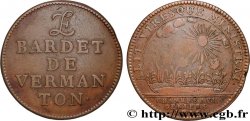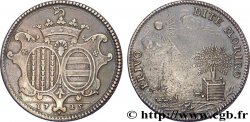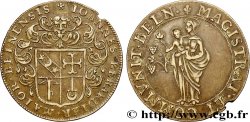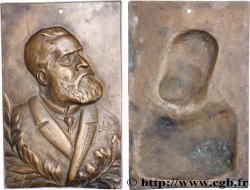fjt_697661 - BOURGOGNE - VILLES ET NOBLESSE Jeton Ar 32, société d’éclairage par le gaz de Dijon 1844
150.00 €约 1255.50 CNY
数量
加入购物车

种类 Jeton Ar 32, société d’éclairage par le gaz de Dijon
日期: 1844
材质 silver
直径 32,5 mm
模子方针 12 h.
重量 14,96 g.
侧面 lisse
印模 (abeille) ARGENT
稀少度 R1
关于品相的说明
Exemplaire anciennement nettoyé, des frottements dans les champs. Présence de quelques coups et rayures
正面
正面的文字 SOCIETE D’ECLAIRAGE PAR LE GAZ // (PIGEON) DIJON (PÉTONCLE).
正面的说明书 Écu aux armes de la ville de Dijon couronné sur un champ d’étoiles.
背面
背面的文字 LUCEM DIFFUNDO PER ORBEM..
背面的说明书 Lion à gauche tenant un flambeau, debout sur la Terre dont on aperçoit l’Europe, dessous MDCCCXLIV ; signature PENIN F. - LUGDUNI.
评论
Le gaz naturel était connu depuis l'Antiquité notamment en Perse mais ce n'est qu'à la fin du XVIIIe siècle que l'idée d'un éclairage au gaz apparut. Le procédé ne se répandit que dans la première moitié du XIXe siècle notamment à partir de 1820. Le gaz utilisé était obtenu par distillation de la houille et servait à éclairer les rues puis les logements. Il servit par la suite comme chauffage mais disparut pour l'éclairage en raison de la diffusion de l'éclairage électrique dès 1880.
Natural gas had been known since antiquity, particularly in Persia, but it was not until the end of the 18th century that the idea of gas lighting appeared. The process did not spread until the first half of the 19th century, particularly from 1820. The gas used was obtained by distillation of coal and was used to light the streets and then the dwellings. It was later used as heating but disappeared for lighting due to the spread of electric lighting from 1880.
Natural gas had been known since antiquity, particularly in Persia, but it was not until the end of the 18th century that the idea of gas lighting appeared. The process did not spread until the first half of the 19th century, particularly from 1820. The gas used was obtained by distillation of coal and was used to light the streets and then the dwellings. It was later used as heating but disappeared for lighting due to the spread of electric lighting from 1880.








 对产品描述纠错
对产品描述纠错 打印
打印 分享我的选择
分享我的选择 提问
提问 Consign / sell
Consign / sell
 产品介绍
产品介绍











